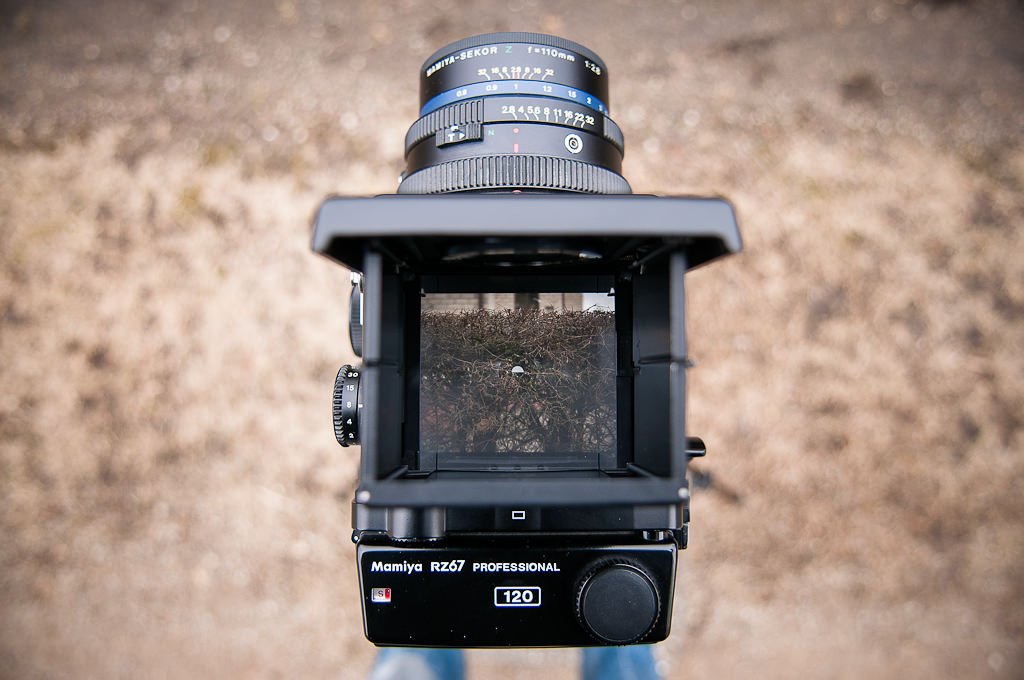The Best Medium Format Film Camera: Why the RZ67 is so Popular
The Mamiya RZ67 is a professional medium format single-lens reflex camera produced by Mamiya, a renowned Japanese camera manufacturer. Introduced in the late 1970s, it quickly became a favorite among studio photographers and portrait artists. The camera was repopularized through YouTube film moguls and working artists alike, all hailing it as the best medium format film camera. Today I’ll examine what specs make it such a beloved medium format film camera.
©photographylife.com
Specs and Pros
Build & Material:
The RZ67 is built with a mix of metal and high-quality plastics, giving it a robust feel. Its heft and build quality are often likened to that of a tank – solid and capable of enduring the rigors of professional use. i.e. if you drop this thing it isn’t always game over!
Modular System:
The RZ67 is a medium format film camera that employs a modular design, allowing photographers to interchange components. This includes:
Film Backs: One of the most distinctive features. The film backs can be exchanged mid-roll, offering versatility in shooting – you can switch between different film types or speeds without having to finish a roll. Film backs include a 6x7 film back for 120, a 6x7 film back for 220, a 4.5 x 6 film back, a 6x6 film back, and 7x7 Polaroid film back, and even a 4x5 film back. This ability to modulate the camera alone makes the RZ67 one of the market's best medium format film cameras.
Polaroid Film Back on the RZ67 ©Matt Osborne Photography
Viewfinders: The standard is the waist-level viewfinder, but there are several prism finders that can be attached, depending on the photographer's preference. This allows the photographer to shift perspectives from hip to eye level with ease.
Lenses: A range of lenses can be attached to the RZ67, from ultra-wide to telephoto, each with its own leaf shutter. The RZ67 is a medium format film camera best known for its use in studio portraiture but offers enough high quality lenses that it can be used for documentary, still life, or any variety of subject matter.
Rotating Back Design:
The film back can be rotated 90 degrees, allowing the photographer to switch between portrait (vertical) and landscape (horizontal) orientations without having to turn the entire camera. This feature is particularly handy for studio photographers looking to add variety to their looks mid shoot.
Bellows Focusing System:
This is another hallmark of the RZ67's design. The bellows focusing allows for very close focusing, making it unnecessary to use additional macro rings for close-up shots. It's a smooth and precise system, controlled via a large knob on the side of the medium format film camera.
Size & Ergonomics:
The RZ67 is undeniably large and heavy, characteristic of many medium format cameras of its era. Its ergonomic design, however, is focused on studio usage. The placement of dials and knobs is intuitive, providing a tactile experience. Studio photographers love this medium format film camera for how specific compositions become utilizing its features. Everything on this camera can be dialed in to nail the perfect portrait.
Shutter:
Each lens for the RZ67 comes with an integrated electronic leaf shutter, which means the shutter is in the lens itself, not the camera body. This allows for very high flash synchronization speeds, making it highly suitable for studio flash photography. The RZ67 offers both front and rear curtain flash sync, providing more creative flexibility when shooting with strobes or flashes.
Waist-level Viewfinder:
The standard waist-level viewfinder is collapsible and contains a flip-up magnifying loupe to assist in focusing. The ground glass screen provides a bright image, crucial for manual focusing. In comparison to a camera like the Rolleiflex, which can be dim and highly influenced by bright reflective light, the RZ67 is known for being one of the best cameras to look through.


Why the RZ67 Might Not Be For Everyone:
Weight and Size:
The RZ67 is bulky and heavy, making it less ideal for casual shooting or on-the-go street photography. For reference, this camera weighs about 5 1/2 pounds. If you need help envisioning this picture holding two Cosco rotisserie chickens or scooping up a Mexican Cottontail Rabbit. If you want to shoot street, I’d advise against buying this camera.
Learning Curve:
This camera requires a manual approach. There might be a learning curve for those used to auto modes on digital cameras. Even with those with experience with medium format film cameras, the RZ67 might take some adjusting. However once you really drill down its basic design and functions, you should have no problem with this medium format film camera.
Cost:
Good quality RZ67 bodies and lenses can be expensive, especially when compared to 35mm systems. Full kits (body and lens included) range around $1000 but highly modulated versions can start crawling towards the $2000 or even $3000 mark. This might not be the best medium format film camera for you if you’re looking to shoot on a budget.
Film Costs:
Medium format film can get pricey when there is only 10 shots per roll. Although if you’re shooting film this isn’t news to you and probably won’t be the deciding factor to turn you off this medium format film camera.
The Mamiya RZ67's design is a reflection of its purpose: to offer utmost flexibility and quality to professional photographers. Its modular system, rotating back, and bellows focusing system make it both unique and functional. However, its size and weight also communicate that it's a camera primarily designed for studio or controlled environments rather than spontaneous street photography. It's a workhorse that, in the hands of a skilled photographer, can produce images of unparalleled beauty and detail making it undeniably one of the best medium format film cameras on the market.




